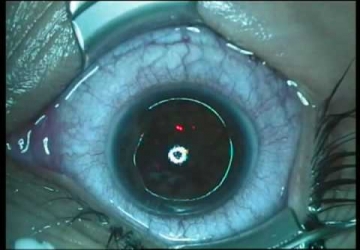
Epi Lasik surgery is one of the vision correction procedures used in
ophthalmology clinics for the purpose of curving the cornea with the help of laser,
and it is very similar to the regular LASIK procedure except that it includes cutting
a very thin part of the epithelium layer on the surface of the cornea and thus may
be suitable for patients who have a thin cornea.
And with the question of Dr. Muhammad Hantira, an honorary assistant
professor, ophthalmology department, Umm Al-Qura University, Saudi Arabia
Explain to us:
One of the advantages of the LASIK procedure that makes it the most preferred
by many eye surgeons is the lack of the need to use alcohol to facilitate the
separation of the epithelium layer in the cornea, as is the case in LASIK, as many
ophthalmologists consider that the alcohol used has toxic effects on the cells of
the epithelium layer. In the cornea, it may delay the recovery period and return
the patient's vision to a normal level.
The duration of treatment is approximately three days.
What is the reason for resorting to the operation?
Many patients may resort to an Epi-LASIK procedure due to one of the following
problems:
Short sightedness. Farsightedness injury. Farsightedness or astigmatism.
To get rid of prescription glasses or contact lenses.
The necessary checks and procedures before undergoing the operation
Before deciding on the possibility of performing an IBD, a patient must undergo
some tests required by the eye surgeon, including:
A comprehensive eye examination that includes measuring some structures
inside the eye in addition to examining the visual level.
Double endoscopic examination.
Quantitative and qualitative examination of the tear film in the eyes.
Corneal topography; To know the strength and shape of the cornea.
Wave front inspection; To measure high gaze aberration.
Corneal thickness measurement.
Accurate pupil size measurement.
Complications of Epi lasik operation may expose the patient to several risks, and
despite the high success rates of LASIK operations, it may carry some
complications that the patient should be aware of and be aware of, even if they
are rare, such as:
Sensitivity to light.
Dry Eye.
Blurred or cloudy vision.
The need to repeat the operation for not achieving the required level of
vision.
Operation procedure steps
The Epi-Lasik process includes three stages:
Preparing for the operation: The patient is given local anesthesia by using
an anesthetic eye drop, and perhaps giving him a sedative intravenously for
more comfort during the operation.
Before that, the patient is asked not to use contact lenses for at least two
days before the operation.
During the operation: Dr. Hantereh uses a spacer to keep the eyelids wide
apart and the eye open to facilitate work on the cornea, then passes a
special micro-device that contains a sharp blade that cuts a very thin
portion of the corneal surface and separates it from the corneal stroma.
And it allows the passage of intermittent flashes of laser radiation that
reach the cornea and work to reshape its surface in about 20 seconds.
After that, a doctor returns the separated layer of the surface of the
cornea, and he may put a very thin lens on it to help it heal quickly, then
apply a few drops of the antibiotic to avoid infection.
After the operation: the patient can leave the surgeon's clinic immediately
after the operation is over, and it is preferable to accompany one of the
acquaintances or relatives because the patient is not able to drive a car.
The recovery period The success rates of the operation depend mainly on
the patient’s compliance with the eye surgeon's instructions, as being
careful to use eye drops and taking other medicines is the most important
thing that may enhance the chances of recovery and help reach the best
results.
Usually, the patient can notice an improvement in the level of vision after
about a week of the operation and reach the best level of the ability to look
well without glasses after about 3 to 6 months.